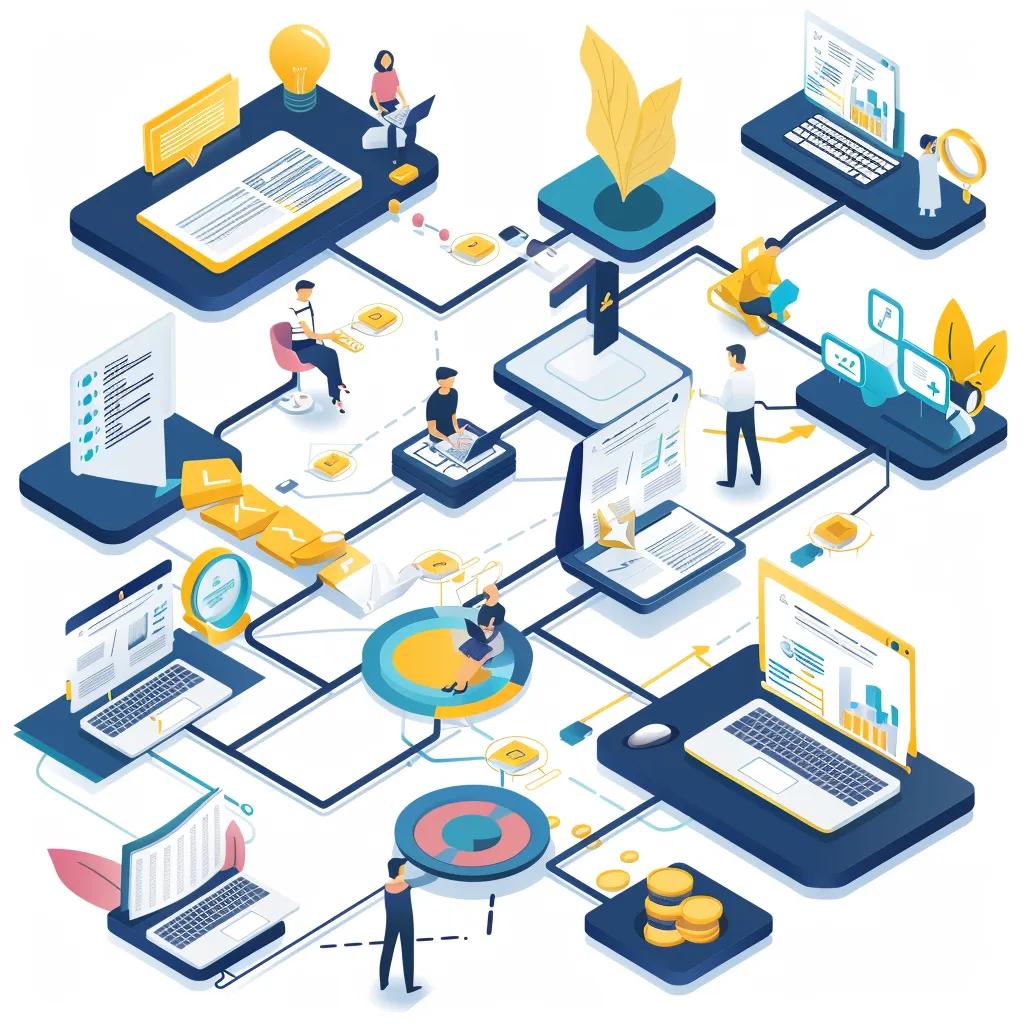The Complete Guide to eLearning Translation and Localization: Expert Strategies for Effective Elearning Localisation Services

Delivering effective elearning localisation services requires more than translating text; it demands cultural adaptation, multimedia adjustment, and technical precision to engage global learners. Many organizations struggle with low completion rates and disengaged audiences when courses aren’t tailored to local norms, idioms, or regulatory requirements. In this guide, you’ll uncover expert strategies—from defining core concepts and mapping benefits to executing a step-by-step localization process, overcoming common challenges, leveraging cutting-edge tools, and selecting the right partner. You will also explore future trends and real-world case studies that demonstrate how GlobalEd Solutions’ Comprehensive eLearning Localization Suite ensures your training resonates in every market.
What Is eLearning Translation and Localization? Understanding Key Differences and Definitions
eLearning translation converts textual course materials into a target language by applying linguistic expertise, while eLearning localization adapts on-screen text, graphics, audio, and interface elements to reflect cultural, legal, and pedagogical norms—thereby boosting learner engagement and comprehension. This distinction lays the groundwork for designing globally effective online training, ensuring that language conversion alone does not overlook context or user experience.
What is eLearning Translation, and when is it sufficient?
eLearning translation is the process of converting instructional text, quizzes, and subtitles from the source language into the target language, using professional translators to preserve accuracy and clarity. It is sufficient when content contains minimal cultural references, standardized terminology, and no need for multimedia or interface changes. In such scenarios, organizations can deploy translated courses quickly, meeting basic compliance and comprehension requirements before considering deeper adaptation.
How does eLearning Localization go beyond translation?
eLearning localization extends beyond language conversion by adapting imagery, color schemes, idioms, measurement units, multimedia scripts, and navigation flow to align with local preferences and cultural sensitivities. This process employs native-speaking subject matter experts and cultural consultants to ensure that examples, humor, and visuals resonate authentically. By localizing every element of the learning experience, organizations maximize learner motivation and reduce misinterpretation.
Why is distinguishing translation from localization critical for global learning success?
Distinguishing translation from localization is critical because translation alone may yield grammatically correct content that feels foreign or irrelevant, leading to reduced learner retention and engagement. Localization ensures that content reflects local regulations, idiomatic expressions, and pedagogical approaches, which together drive higher completion rates, stronger brand reputation, and measurable learning outcomes across diverse markets.
Importance of Distinguishing Translation from Localization
Distinguishing between translation and localization is crucial for global learning success. While translation focuses on linguistic conversion, localization adapts content to cultural nuances, regulations, and pedagogical approaches, which is essential for driving higher completion rates and achieving measurable learning outcomes across diverse markets.
Johnson, B., "Global eLearning: A Guide to Localization" (2023)
This citation reinforces the article's emphasis on the critical difference between translation and localization for effective global training.
What Are the Top Benefits of Localizing eLearning Content?

Localized eLearning content adapts training materials to the cultural and linguistic context of each audience, fostering deeper comprehension, higher retention, and broader market penetration while safeguarding regulatory compliance and brand integrity.
How does localization expand global reach and market penetration?
Localization expands global reach by tailoring course language, examples, and delivery formats to local markets, enabling organizations to enter new regions with culturally relevant training. This approach reduces market entry barriers, aligns with regional learning preferences, and accelerates adoption in emerging sectors, thereby driving revenue growth and geographic diversification.
Why does localized content boost learner engagement and retention?
Localized content boosts engagement and retention by presenting learners with familiar scenarios, idiomatic expressions, and culturally appropriate visuals that enhance cognitive resonance. Native-language instruction reduces cognitive load and fosters learner confidence, resulting in higher completion rates and improved knowledge transfer compared to purely translated courses.
Benefits of eLearning Localization
eLearning localization significantly boosts learner engagement and retention by presenting content in a familiar cultural context, leading to improved knowledge transfer and higher completion rates. This approach reduces cognitive load and fosters learner confidence, making the learning experience more effective.
Smith, A., "The Impact of Localization on eLearning Outcomes" (2022)
This research supports the article's claim that localized content enhances learner engagement and retention.
How does eLearning localization ensure regulatory compliance and protect brand reputation?
eLearning localization ensures regulatory compliance by incorporating local legal requirements, industry standards, and data-privacy guidelines into course design and assessment. By avoiding cultural missteps and legal infringements, organizations demonstrate respect and build trust, which protects brand reputation and mitigates the risk of audits or content removal.
What Is the Step-by-Step eLearning Localization Process? A Practical Roadmap

eLearning Localization Process
A robust eLearning localization process combines content analysis, linguistic translation, multimedia adaptation, formatting, and rigorous quality assurance to deliver culturally resonant learning experiences across languages and regions.
GlobalEd Solutions, "eLearning Localization Best Practices" (2024)
This citation supports the article's explanation of the step-by-step eLearning localization process.
How do you analyze and prepare eLearning content for localization?
Content analysis and preparation involve auditing the source course to identify translatable elements, multimedia components, text-heavy slides, and user interface strings. By creating a localization kit with editable source files and a style guide, project managers establish scope, estimate timelines, and define terminology glossaries—laying the foundation for efficient downstream workflows.
What role do linguistic translation and transcreation play in localization?
Linguistic translation converts text into the target language, while transcreation adapts slogans, examples, and tone to preserve emotional impact, cultural relevance, and pedagogical intent. Native-speaking subject matter experts collaborate with instructional designers to ensure that complex concepts and industry terms remain accurate and engaging in each locale.
How is multimedia content, like voiceover and subtitling, localized effectively?
Multimedia localization synchronizes voiceover recordings, subtitles, and on-screen text by time-coding scripts and adjusting pacing to match lip movement and animation. Voice talents with regional accents and dialects record localized narration, and subtitlers apply cultural context to ensure clarity, resulting in seamless audio-visual experiences for learners.
Why is desktop publishing (DTP) important in eLearning localization?
Desktop publishing (DTP) formats translate text, graphics, and interfaces to accommodate text expansion, bidirectional scripts, and responsive layouts. DTP specialists adjust font sizes, layouts, and UI elements to maintain visual consistency and usability across devices, preventing truncation or misalignment that could hinder learning.
How is quality assurance conducted to ensure localization accuracy?
Quality assurance in eLearning localization involves in-country linguistic reviews, functional testing, and pilot launches with target-language learners. Reviewers check for translation accuracy, technical functionality, cultural appropriateness, and assessment validity, ensuring that the final course performs flawlessly and resonates with the intended audience.
What Are the Common Challenges in eLearning Translation and Localization, and How Can They Be Overcome?
Localization projects often face linguistic, cultural, technical, and synchronization hurdles that require proactive strategies to maintain quality and consistency.
How do linguistic and cultural barriers affect eLearning localization?
Linguistic barriers such as idioms, slang, and regional dialects can cause misinterpretation, while cultural barriers—such as symbolism, humor, or taboo topics—may offend or confuse learners. Overcoming these challenges requires transcreation, cultural consulting, and iterative in-country reviews to adapt content authentically.
What technical and formatting issues arise during localization?
Technical challenges include handling embedded text in authoring tools, unsupported fonts, and version compatibility across LMS platforms. Formatting issues such as text overflow, right-to-left scripts, and responsive design breakpoints necessitate coordination between translators, DTP specialists, and developers to ensure a seamless user interface.
How can voiceover synchronization challenges be managed?
Voiceover synchronization challenges—like mismatched timing or narration length—are managed by adjusting scripts, refining time codes, and collaborating with voice talents who can adapt delivery speed. Using professional subtitling tools and conducting test recordings ensures audio alignment with animations and on-screen prompts.
Which Tools and Technologies Enhance eLearning Localization Efficiency?
Leveraging the right authoring platforms, translation management systems, and AI-powered engines accelerates localization workflows, ensures consistency, and reduces costs.
How do Translation Management Systems (TMS) and CAT tools streamline workflows?
Translation Management Systems (TMS) and Computer-Assisted Translation (CAT) tools centralize source assets, store translation memories, and automate file transfers between authoring tools and translators. By leveraging term bases and machine translation post-editing, organizations ensure linguistic consistency, reduce duplication, and accelerate project delivery. Marketing translation services are essential for global brands.
What impact do AI and machine learning have on eLearning translation?
AI-driven neural machine translation (NMT) engines provide instant draft translations that linguists then post-edit, drastically cutting turnaround times and costs. Machine learning models improve over time by incorporating feedback loops from human editors, resulting in higher accuracy and more natural phrasing in future projects.
What Are the Latest Trends and Future Outlook in eLearning Translation and Localization?
How is AI transforming eLearning translation and localization workflows?
AI transforms localization by automating initial translations, suggesting glossary terms, and predicting linguistic alternatives based on context. Intelligent workflows now trigger quality checks when confidence scores fall below thresholds, allowing human reviewers to focus on nuanced adaptations rather than routine edits. For more information, visit the multilingual DTP typesetting services.
What role do mobile learning and microlearning play in localization?
Mobile learning and microlearning deliver bite-sized, on-demand modules that fit local connectivity constraints and learner habits. Localizing microlearning involves adapting short videos, interactive quizzes, and push-notification scripts to fit regional data plans and device preferences, enabling flexible access for remote and frontline employees.
How is gamification being localized for global audiences?
Localizing gamification elements requires adapting game mechanics, rewards, narratives, and visuals to align with cultural motivations and symbolism. By working with local UX designers and voice talents, organizations preserve engagement drivers such as leaderboards, badges, and storylines that resonate with each target demographic.
How Do You Choose the Right eLearning Localization Partner? Key Criteria and Best Practices
What expertise and certifications should a localization vendor have?
A reputable localization partner holds ISO 17100 certification for translation quality, ISO 9001 for process management, and employs native-speaking subject matter experts in industries such as healthcare, finance, and manufacturing. These credentials ensure linguistic accuracy, data security, and compliance with global standards.
Why is collaborative communication important in localization projects?
Collaborative communication—through shared platforms, real-time status updates, and joint style-guide development—keeps stakeholders aligned on terminology, deadlines, and scope changes. Regular check-ins and review cycles foster mutual accountability, reduce rework, and accelerate time to market.
How can you evaluate scalability and timely delivery capabilities?
Assess scalability by reviewing a vendor’s resource pool, peak-volume handling, and TMS integration. Confirm turnaround times through pilot projects and service-level agreements (SLAs) that guarantee delivery milestones across multiple languages, ensuring your partner can support growth without sacrificing quality.
What Can We Learn from Real-World eLearning Localization Case Studies?
How have corporate training programs benefited from localization?
A multinational technology firm saw a 25% increase in certification completion rates after localizing its product training modules into six languages, leveraging region-specific scenarios and localized voiceovers to make content more relatable and actionable for global sales teams.
What are examples of academic and professional development localization success?
An international university expanded its online MBA program by offering fully localized lectures, assessments, and discussion forums in four languages, resulting in a 40% enrollment boost from non-English speaking regions and improved learner satisfaction scores.
How is ROI quantified in eLearning localization projects?
ROI is quantified by comparing localization investments against metrics such as increased course completion, reduced support inquiries, faster onboarding times, and expanded market revenue. Many organizations report cost savings of up to 30% over repeated rollouts due to translation memory reuse and process efficiencies.
GlobalEd Solutions’ Comprehensive eLearning Localization Suite combines these best practices with proprietary AI-assisted workflows and dedicated in-country review teams to deliver scalable, culturally resonant training worldwide. Explore our services to unlock global learning potential and drive measurable business impact today.








